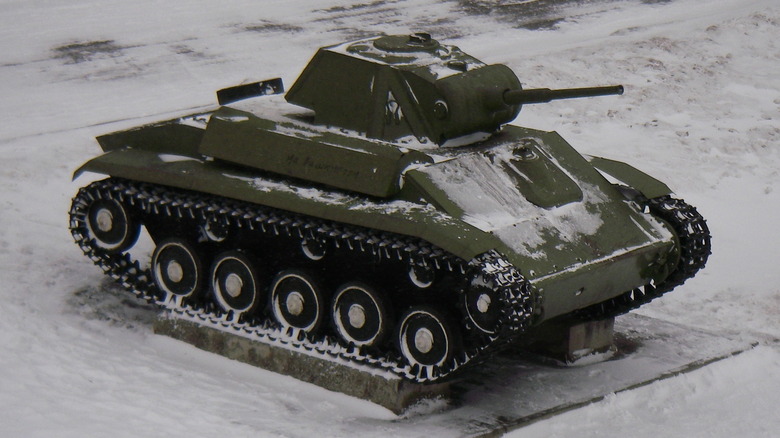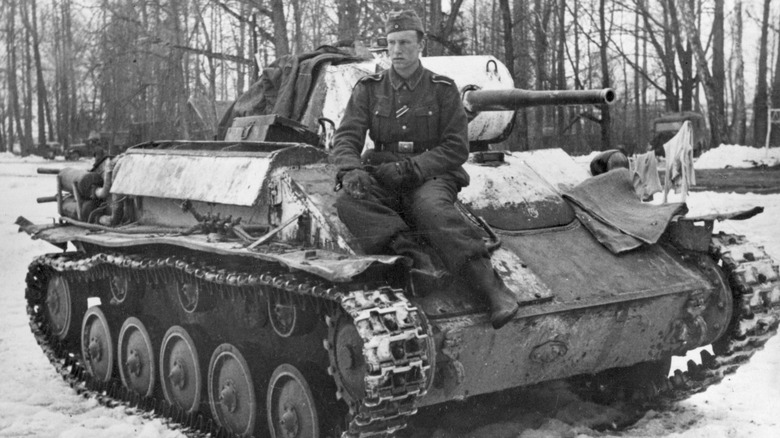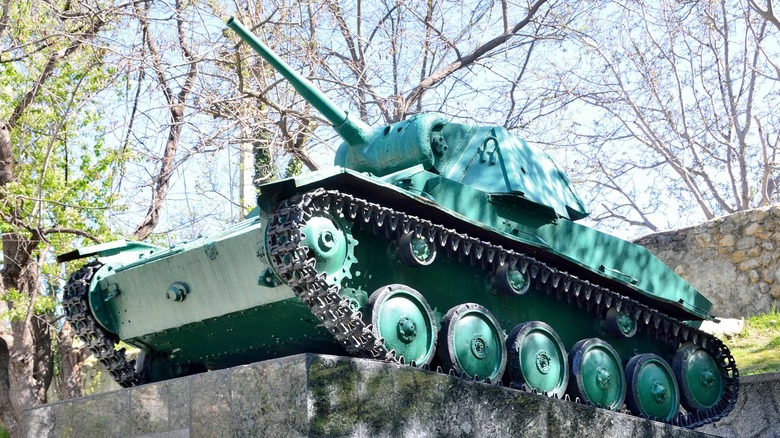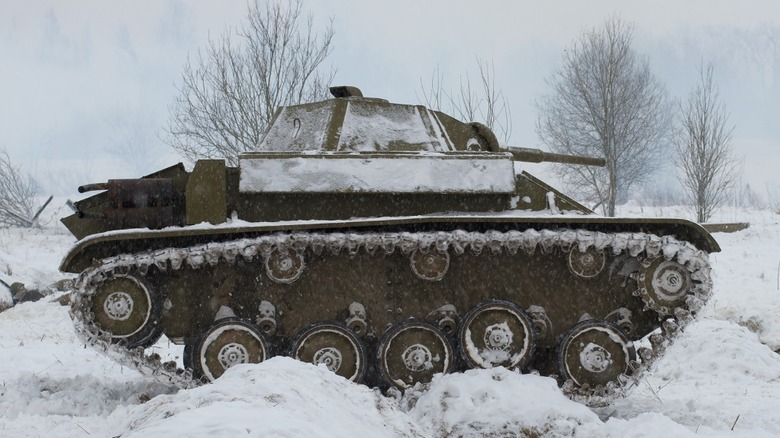Everything To Know About The Soviet T-70 Tank
When you say "tank," most would think of large lumbering beasts like the German Tiger tank or the Russian KV-1. However, military powers also extensively use small tanks like the American M3 Stuart and the British Light Tank Mk VI. These light tanks don't have massive guns or heavy armor to face off against other armored vehicles. Nevertheless, they were still essential equipment used for reconnaissance, harassing enemy troops, and sometimes as infantry support.
When the Germans invaded the Soviet Union, the latter had to increase its military-industrial output to face the onslaught. While the T-34 was eventually produced in great numbers, that wasn't the case during the early years of Operation Barbarossa.
The Soviet Union had to exert extreme effort to produce tanks to counter Hitler. However, while they were trying to ramp up production of the T-34, not every factory could accommodate its size. To utilize smaller production facilities, the Soviets decided to build the T-70 light tank.
[Featured image by One half 3544 via Wikimedia Commons | Cropped and scaled | Public Domain]
The quirks and features of the T-70 Light Tank
The T-70 Light Tank weighs around 10 tons — a far cry from the popular WWII tanks like the M4 Sherman's 42 tons or the massive Tiger II's nearly 77 tons. It comes equipped with a 45-mm anti-tank gun and a co-axial machine gun, which the Red Army considered inadequate for facing its contemporaries in typical tank-on-tank battlefield engagements.
Since the T-70 is a light tank, its armor only ranges from 10 to 60 mm — again, incredibly thin when compared to the M4's 12 to 177 mm armor, and the Tiger II's 25 to 185 mm armor. However, its greatest weakness is the two-person crew.
The T-70 can only be operated by a driver and the tank commander, who also serves as the gunner and loader. Because the commander had to divide his time between commanding his driver, locating targets, loading the ammunition, and shooting the gun, they would be hard-pressed to spare the effort to coordinate their actions with other tanks and units.
This makes it difficult for the T-70 to act effectively, especially as its armor and weaponry means it cannot go toe-to-toe against its contemporary German Panzers.
[Featured image by Momber via Wikimedia Commons | Cropped and scaled | Public Domain]
The last of the Soviet light tanks
As Soviet T-34 tank production and crew training improved in the war's latter stages, it no longer needed to produce light tanks such as the T-70. Since the T-34 had more crews, thicker armor, and better weaponry, relegating it to rear-echelon duties made sense. As HistoryOfWar.org notes, "By November 1943, the light tanks had also been removed from the tank brigades, which were now entirely equipped with the T-34."
By the war's end, the Soviets have produced almost 60,000 T-34 medium tanks. Furthermore, it also had other heavier equipment like the IS-2 heavy tanks. Given that the T-34s were faster, had thicker armor, and were generally more capable than the T-70, it no longer made sense to continue production of the latter.
Although Russia made the PT-76 light amphibious tank from 1951 to 1969, it was more of an amphibious tracked vehicle designed for reconnaissance missions and water-borne operations. Aside from that, they no longer made any other light tank, making the T-70 the last true light tank from Russia.
The T-70's outstanding moments in battle
Despite its lackluster specifications, the T-70 and its crews showed their prowess twice in battle. According to a War is Over account, Lt. Pavlovich of the 49th Guards Tank Brigade destroyed four German Panzers, including one of the newer Panther models, near Prokhorovka during the Battle of Kursk.
Another outstanding performance of the T-70 was on March 26, 1944, when Sgt. Alexander Pegov of the 3rd Guards Army sighted a column of German Panthers approaching his position. These newer, larger medium tanks would easily overpower the small, outdated light tank in a head-to-head battle — especially given that the column is estimated to have 18 units versus Pegov's lone T-70.
However, the Sergeant used nearby foliage to camouflage his tank, and he waited for the Panthers to draw closer. When the lead Panther was less than 200 meters from the T-70, Sgt. Pegov opened fire on the column, destroying one tank and immobilizing another.
The two disabled Panthers blocked the road, preventing the other tanks from engaging the T-70 and allowing it to retreat. Because of his actions that day, Will Kers of the Tank Encyclopedia Archives wrote that "Pegov was promoted to a lieutenant and decorated as a Hero of the Soviet Union."
Even though the T-70 wasn't as legendary as the T-34 or the KV-1, it still served a crucial role in the Red Army, allowing it to withstand the German offensives while the Soviet Union was frantically moving its industrial base beyond the Ural Mountains. It was also the basis of the more successful SU-76M self-propelled gun, which saw service until the 1970s.



